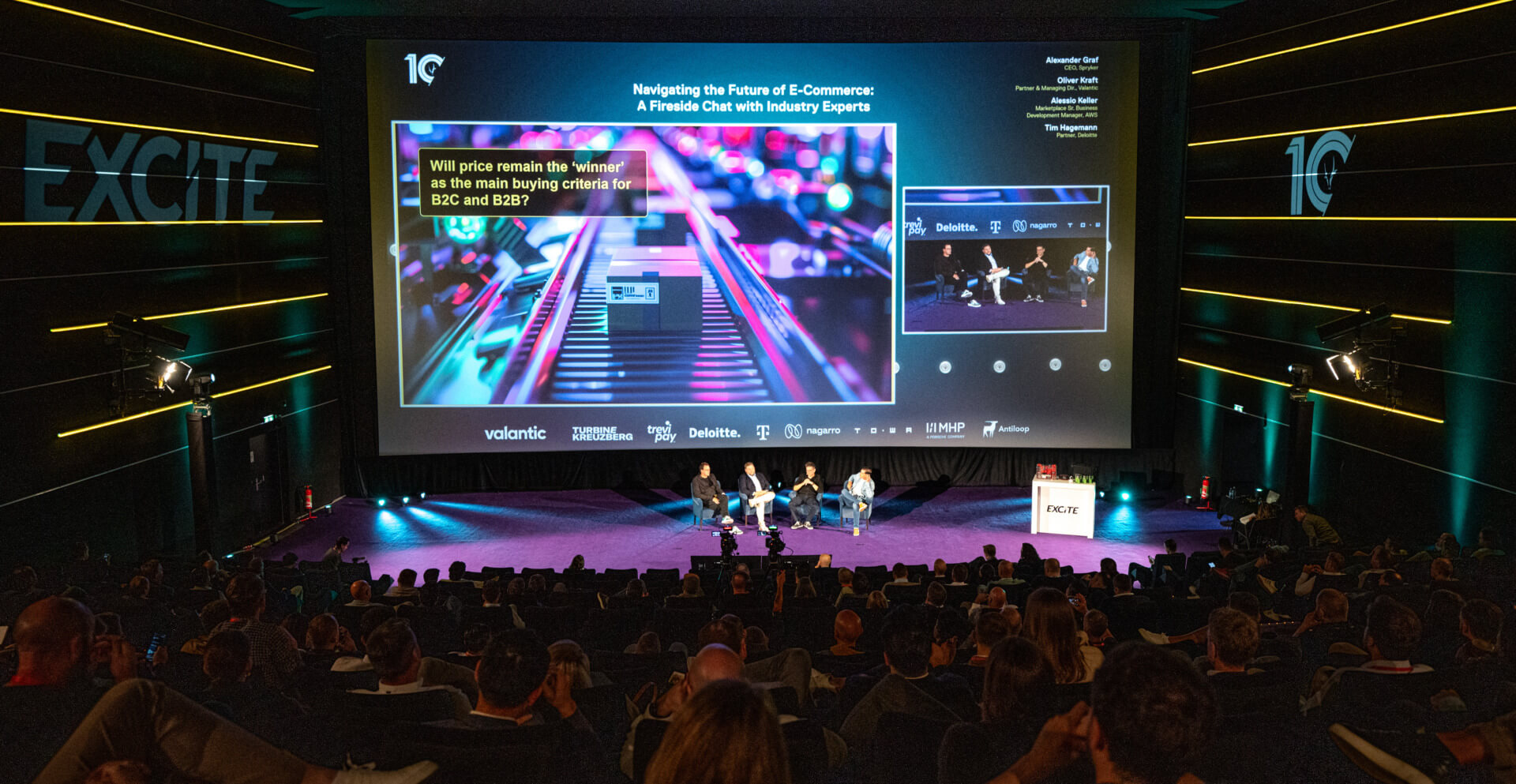Global Market Trends
Top 3 Global Market Trends and What To Do Next
Amid tariff shocks, AI disruption, and evolving buyer expectations, global commerce in 2025 is entering a high-stakes era of transformation. This blog unpacks three pivotal market trends and offers strategic guidance for digital commerce leaders looking to stay agile, scalable, and resilient in a volatile landscape.


In 2025, global commerce is being reshaped by political instability, economic headwinds, and accelerating technological change. For digital commerce leaders, these forces create both disruption and opportunity. Navigating this new landscape requires more than awareness. It demands strategic action. In this blog, we’ll unpack the top three global market trends shaping commerce today and, more importantly, explore how businesses can respond effectively to stay competitive, resilient, and poised for growth.
1. Tariff Turbulence Reshapes Global Trade Dynamics
The reintroduction of sweeping tariffs by the U.S. administration has disrupted global supply chains and e-commerce operations. Notably, the elimination of the “de minimis” exemption for Chinese imports has significantly impacted platforms like Shein and Temu, leading to price hikes and operational adjustments. Major retailers, including Amazon and Walmart, are reevaluating their sourcing strategies and warning of potential price increases due to these trade policies.
For B2B companies, the ripple effects are just as consequential. Tariffs are driving up costs on critical components, particularly electronics, industrial machinery, and raw materials, forcing manufacturers and distributors to rethink their supplier relationships and pricing models. Long-standing just-in-time sourcing strategies are being replaced with diversified or nearshored alternatives to improve resilience. As a result, digital commerce leaders in B2B must ensure their platforms can flex with volatile landed costs, support region-specific catalogs, and integrate real-time pricing and availability from multiple vendors. Without that flexibility, customer trust and margin erodes quickly.
2. AI and Automation Drive Operational Efficiency
Artificial Intelligence (AI) is no longer a futuristic add-on. It’s becoming a foundational capability for digital commerce optimization. From powering personalized customer journeys to dynamically adjusting pricing, routing fulfillment, and forecasting demand, AI is enabling businesses to operate with a level of agility that was previously impossible. As economic volatility persists and operational efficiency becomes paramount, companies are accelerating the adoption of AI-driven tools to make faster, smarter decisions and reduce manual overhead.
In the B2C world, AI is already transforming product recommendations, chat-based customer support, and predictive reordering. AI also allows B2B businesses to do more with leaner teams, which is a growing concern given labor shortages and budget constraints. Teams can automate repetitive tasks, reduce error rates, and gain real-time visibility into operations, freeing up human capital for higher-impact, strategic work.
However, with great potential comes real risk. Many organizations struggle with fragmented data, lack of governance, and unclear ownership around AI initiatives. Others deploy tools without a clear use case, leading to skepticism and stalled adoption.
3. Consumer Behavior Shifts Towards Value and Experience
Economic pressures and digital saturation are significantly reshaping buyer behavior. And not just in consumer markets, but across B2B industries as well.
On the consumer side, shoppers are becoming more selective, prioritizing value, transparency, and ease of purchase. They expect seamless, frictionless experiences across every touchpoint: online, mobile, in-store, and social. The rapid rise of social commerce and immersive technologies like AR and VR is accelerating this trend, enabling more personalized, interactive product discovery and decision-making.
For B2B companies, these evolving expectations are setting a new baseline that industrial buyers, procurement professionals, and distributors increasingly bring to their work. Long gone are the days when complex, slow, or opaque purchasing processes were tolerated in the B2B space. Today’s B2B buyers want instant access to product specs, real-time pricing, and self-service ordering tools, also across all devices and formats. And many are now digital natives who expect features like saved carts, AI-powered recommendations, guided configuration, and even visual product previews via AR in sectors like manufacturing, construction, and medtech.
What To Do About It: Recommendations for Resilience and Growth
As global market dynamics grow increasingly volatile, the companies best positioned for success are those who balance speed with precision and bold moves with calculated risks. From navigating tariff turbulence to unlocking the power of AI and meeting rising customer expectations, leaders must rethink how their organizations plan, build, and scale.
Here’s how to translate these imperatives into action:
- Embrace Composable Commerce: Rigid monoliths can’t keep pace with shifting regulations, evolving buyer behavior, or economic instability. Composable commerce platforms that are built from modular, interoperable components enable businesses to adapt without rearchitecting from scratch every time the market shifts.
What You Can Do:
- Transition away from legacy, one-size-fits-all systems toward modular architectures that let you deploy, test, and scale individual capabilities (e.g., product discovery, pricing, fulfillment).
- Use headless and API-first approaches to flex across geographies, customer segments, and channels without disruption.
- Future-proof your business by selecting platforms that allow you to integrate new tools and services rapidly as business needs evolve.
Why It Matters: In an environment where tariffs, policies, and customer demands shift almost monthly, the ability to reconfigure your business without replatforming is a superpower.
- Prioritize Agility Over Perfection: Perfect is no longer the goal. Progress is. Leaders must focus on fast cycles of iteration, learning, and adaptation. Whether launching a new revenue channel, piloting AI, or expanding to a new market, speed-to-value beats slow certainty.
What to Do:
- Deploy MVPs (minimum viable products) quickly, then refine based on data and feedback, especially in digital self-service, marketplace launches, or new AI capabilities.
- Create cross-functional “tiger teams” empowered to test and launch specific initiatives without being bogged down by legacy governance models.
- Monitor KPIs in real time and be prepared to pivot fast. Agility means responding to what’s actually happening, not just what was forecasted 12 months ago.
Why It Matters: According to recent coverage in Forbes, businesses that move decisively, even with incomplete information, are outperforming their slower peers, especially in emerging tech and global commerce expansion.
- Align Cross-Functional Teams: Silos don’t survive in stormy conditions. To respond to global shifts effectively, your tech, operations, sales, and finance teams must be aligned not just on goals but on context, priorities, and timing. The ability to coordinate across functions is just as critical as the strategy itself.
What to Do:
- Create shared planning cadences where market signals, customer feedback, and tech feasibility are discussed jointly, not sequentially.
- Use shared success metrics across departments to drive cohesion (e.g., customer retention, order accuracy, or speed-to-market).
- Empower functional leads to make fast, collaborative decisions without top-down bottlenecks.
Why It Matters: In a composable, fast-moving enterprise, cross-functional execution is the differentiator. Great strategies fail without coordinated, empowered teams behind them.
- Invest in Scalable Infrastructure: Your infrastructure must do more than support business as usual. It needs to enable growth, protect against disruption, and reduce the cost of change. From cloud-native architectures to AI-readiness, scalable systems are the bedrock of adaptive commerce.
What to Do:
- Audit your current stack for scalability, extensibility, and integration flexibility. Eliminate bottlenecks and reduce custom code where possible.
- Ensure your platforms can handle international expansion, compliance changes, and sudden demand surges.
- Build for AI and automation. And not just for today’s needs, but to enable future capabilities in personalization, fulfillment optimization, and predictive analytics.
Why It Matters: As recent macro shifts have shown, infrastructure isn’t just an IT consideration. It’s a strategic lever for the entire business. Organizations with scalable platforms bounce back faster, launch new capabilities sooner, and navigate uncertainty more confidently.
Looking Forward
Whether you’re bracing for trade shifts, chasing AI-powered growth, or responding to new customer expectations, the companies that win are those that build momentum with precision.
At Spryker, we believe the future belongs to organizations that are modular by design, agile by mindset, collaborative in execution, and scalable at the core.
It’s not just about responding faster. It’s about being built to adapt – again and again. By proactively addressing these global market trends with strategic initiatives, businesses can navigate the complexities of 2025 and position themselves for long-term success in the digital commerce landscape.

Learn from other companies how they are turning uncertainty into competitive advantage at EXCITE 2025 taking place on September 25 in Berlin.
Join us at EXCITE- Spryker EXCITE


